My Houzz: Basement Artist Studio to Inspire
http://decor-ideas.org 06/05/2015 16:09 Decor Ideas
At the top of Rhonda Larson’s wish list when buying her 1921 Portland, Oregon, bungalow was to have a designated space for creating art. Larson, who works in the medical device industry, wanted a creative sanctuary that would allow her to keep her mixed-media art and jewelry projects separate from the main living space. The entire lower level, which used to be a damp, dark basement, is now a well-lit space with a door leading onto a patio space. Larson says, “My studio is my favorite space in the home.”
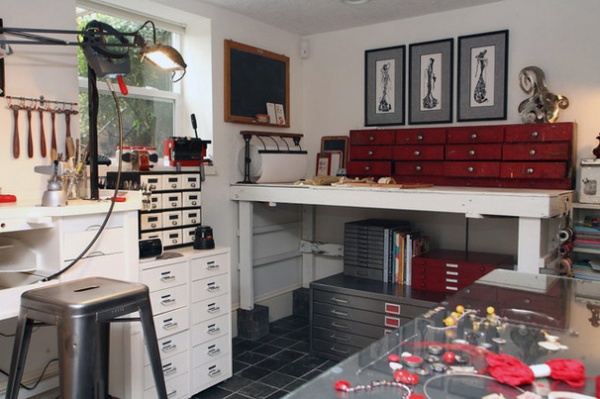
Room at a Glance
Who lives here: Rhonda Larson and her Portuguese water dog, Lua
Location: Laurelhurst neighborhood of southeast Portland, Oregon
Size: About 800 square feet (74 square meters)
Year built: 1921; basement remodeled in 2005
Remodeling budget: $30,000, including new flooring, drywall, windows, door, labor and materials, and moving heat ducts
Larson now has four main designated stations for creating her artwork: ones for painting, sewing, metalwork and, seen here, working on mixed-media and book art. Some of the areas do overlap. All four stations can be used for creating jewelry and metalwork.
The red chest, used to organize various art supplies, and the antique paper dispenser were found on an antiques excursion with Larson’s late father, Kenwood Larson, in Minnesota.
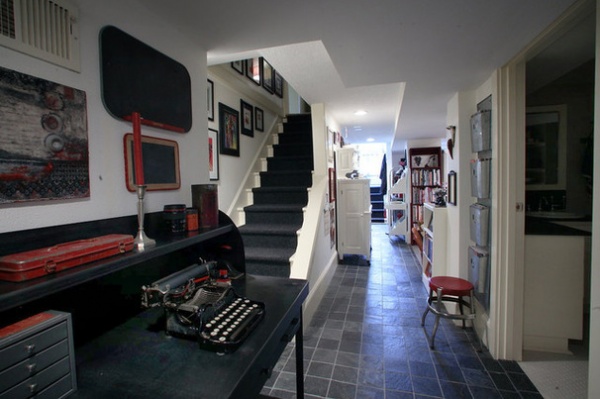
Larson worked with Raphael Design to convert her basement into an art studio in two stages. One half of the studio was completed in stage one, and the opposite side in stage two. Each stage cost about $15,000. The project involved opening and rearranging walls to move heat ducts, and adding new drywall, windows, flooring and a door leading to the backyard patio.
Seen here are stairs that lead to the main level. The stairwell is decorated with Larson’s collection of original art.
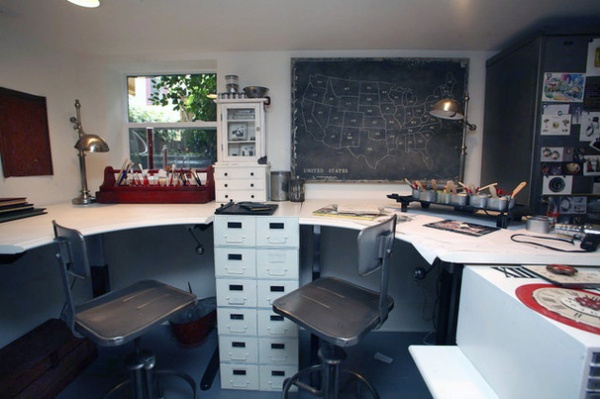
Larson’s painting station is composed of two old architectural drafting tables from The ReBuilding Center. Larson painted stackable index files to hold and organize her painting supplies. She added wheels to the bottoms of a pair of metal antique drafting chairs for easy maneuverability around the studio.
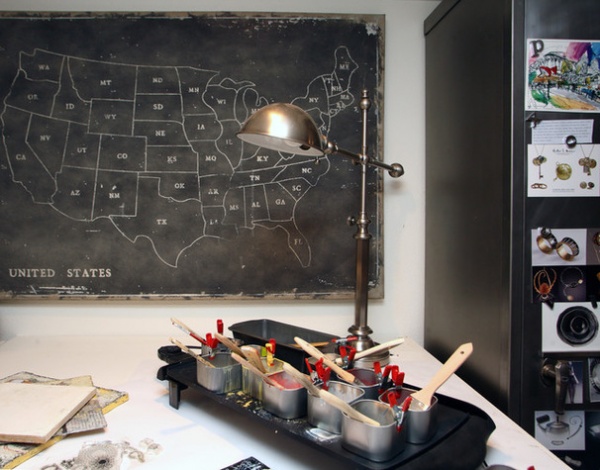
A United States stretched canvas map from Stars also decorates the painting station area. Seen here are encaustic paints used for painting and creating mixed-media projects.
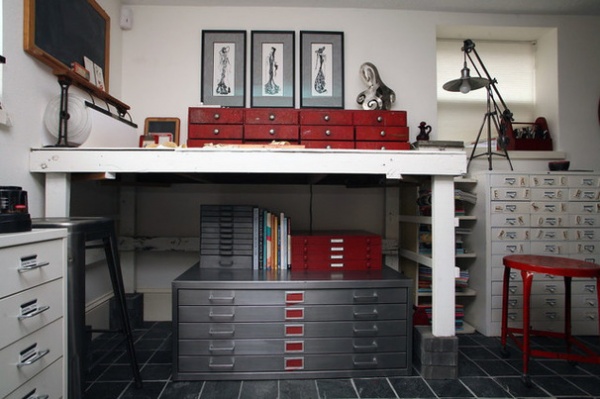
Larson had this vintage steel flat-file media-blasted, sanded and waxed to hold her handmade and decorative paper collection used for mixed-media and book artworks.
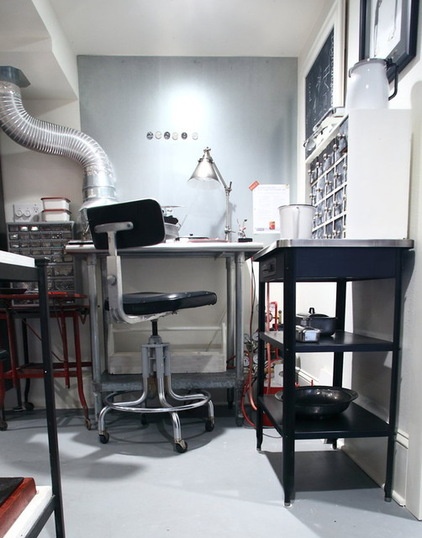
One area is devoted to her soldering and metalwork. Larson had a ventilation system installed to remove soldering fumes from the workspace.
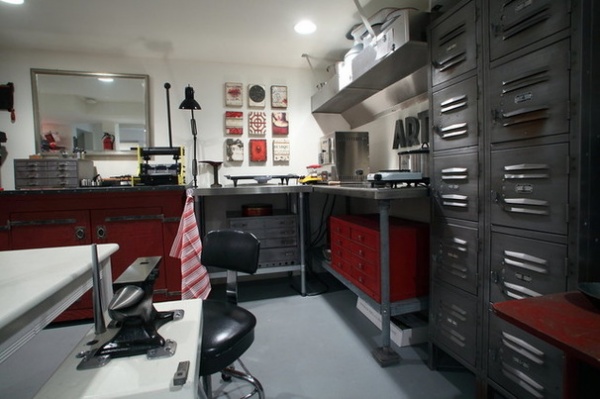
Larson describes her affinity for rescuing dilapidated furniture found in junk stores and flea markets: “I like to imagine a new life for it, then actually make that vision a reality. I even enjoy the manual labor, which is required for each resurrection — it’s very gratifying,” she says. “It might involve having a metal piece media-blasted, then sanding it and waxing or painting it.”
Old steel school lockers, which have been media-blasted, sanded and waxed, as well as metal drawers below hold supplies for enameling, soldering and etching. The small kiln is used for firing metal clay and enameling metals. The anvil is used for hammering and forming metals.
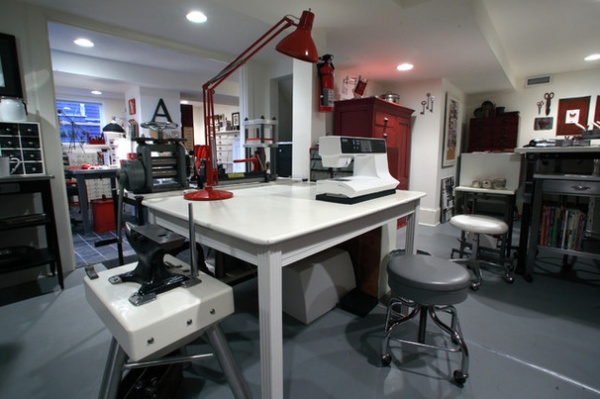
Larson uses her sewing table exclusively for a technique she calls “drawing with stitches,” also known as free-motion stitching, in her mixed-media and book artworks. The sewing area of the studio is out of the way of messy paint, solder and metal areas and can stay clean.
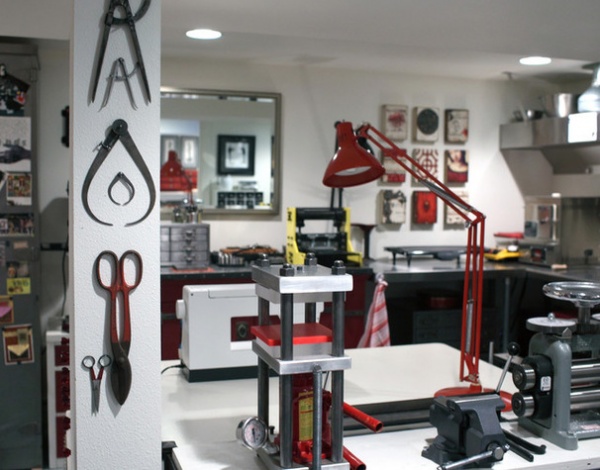
Larson calls the sets of tools hanging on this column her “mamas and babies.” The antique tools belonged to her dad.
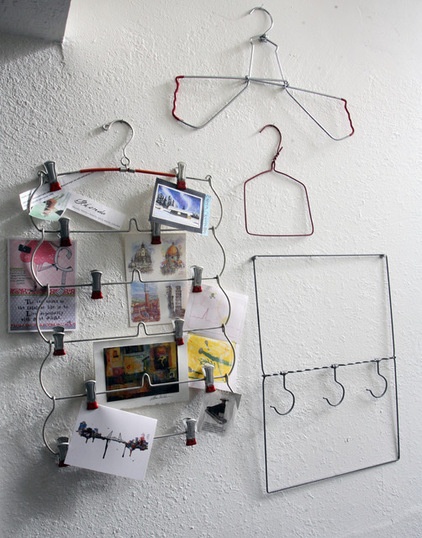
Vintage hangers collected from various shops in Portland are used to save mementos and various bits of inspiration.
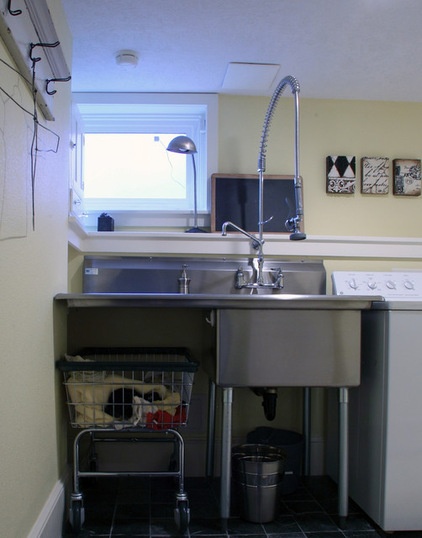
The restaurant sink in the laundry room is from Rose’s Equipment and Supply and is the water source for the studio.
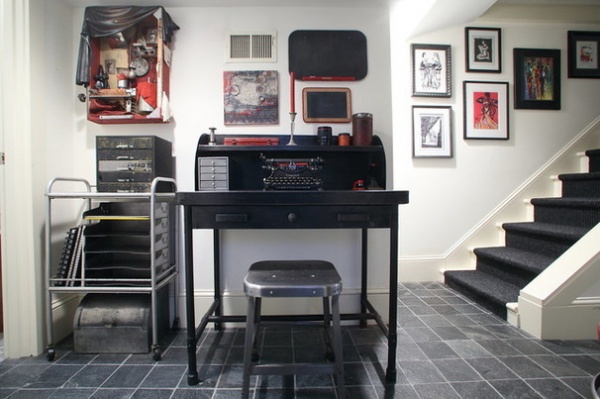
A vintage steel writing desk holds an early-1900s Corona portable typewriter, which Larson uses for her mixed-media work and books.
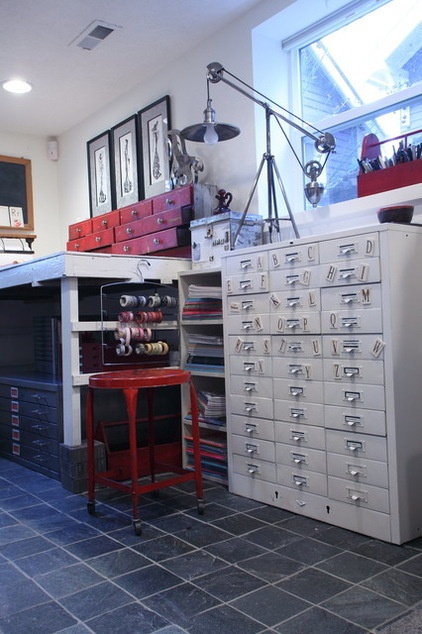
Art supplies are kept in a vintage metal file cabinet that Larson painted. Also shown is one of several vintage metal stools in the studio.
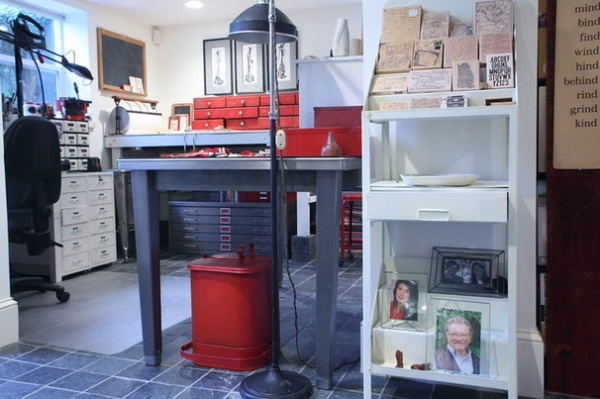
“I’m so drawn to the history and character that come with vintage treasures. I want to imagine their story,” says Larson. “I think this comes from my dad, who loved antiques and was also very artistic. He is the one to whom I owe my creative abilities. He had an incredible eye and appreciation for beauty and all things ‘artful.’” Larson’s late father wrote poetry, carved wood and built and curated a unique log cabin in the woods of Minnesota, which she describes as a piece of art. Her favorite photo of him is displayed in the studio. Also seen here are a few more vintage finds that have been resurrected: a metal worktable, a metal trash can, a floor lamp and a small display cabinet.
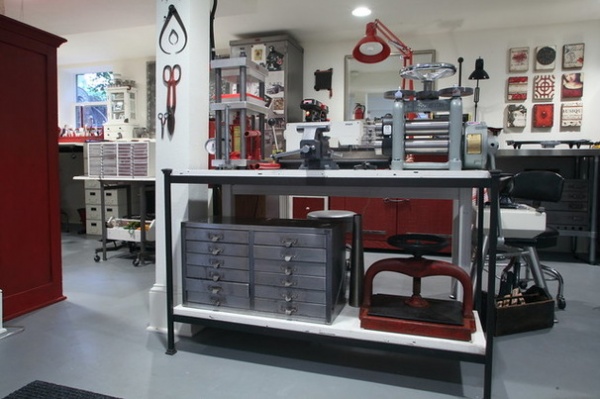
Additional equipment for Larson’s metalwork includes a hydraulic press, a rolling mill, a bench brake and more metal drawers. The antique iron book press was bought on eBay.
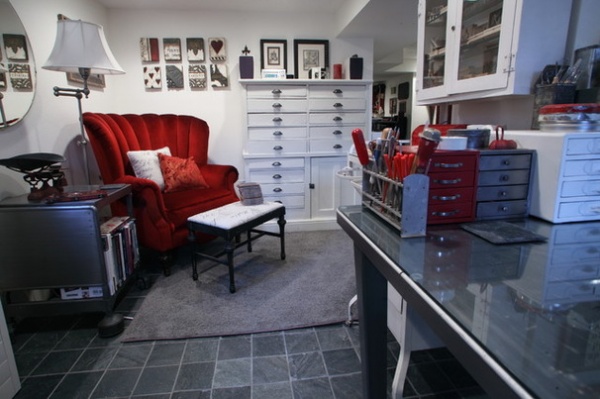
“Chairs, like most furniture, are art to me,” says Larson. She uses this Sherrill chair from Landfair Furniture in Portland for “thinking, creating, reading and sometimes just relaxing.” A vintage steel typewriter table serves as a side table and bookcase.
The white dresser is another piece Larson resurrected from a local vintage shop. She found the bench in a junk store, then painted and upholstered it.
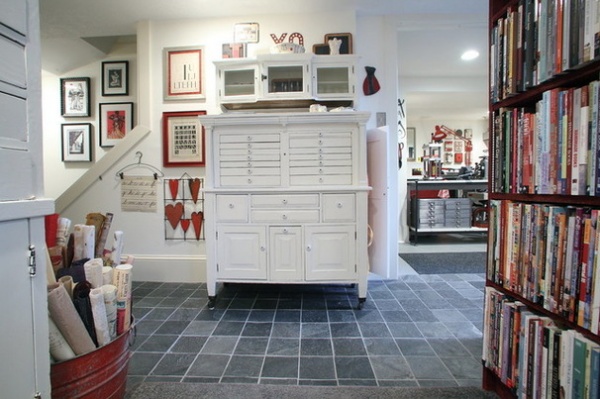
Larson collects vintage medical and dental cabinets and also metal and wooden chests of drawers in many shapes and sizes. “I have a serious obsession with all the drawers and compartments in these pieces,” she says. It started years ago when she fell in love with an antique map chest and thought it would be a great piece to hold art supplies. Since that time, she has collected quite a variety of chests and drawers and many more art supplies to put in them.
The vintage wooden dental cabinet seen here, found in a junk store in Portland, is Larson’s favorite storage piece. She put it back together with nails, glue and Spackle, then painted and distressed it. Its drawers hold more art supplies.
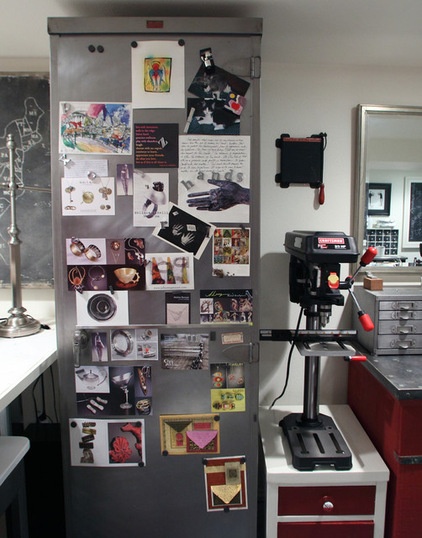
A vintage steel storage unit from City Liquidators is plastered with inspirational cards and images.
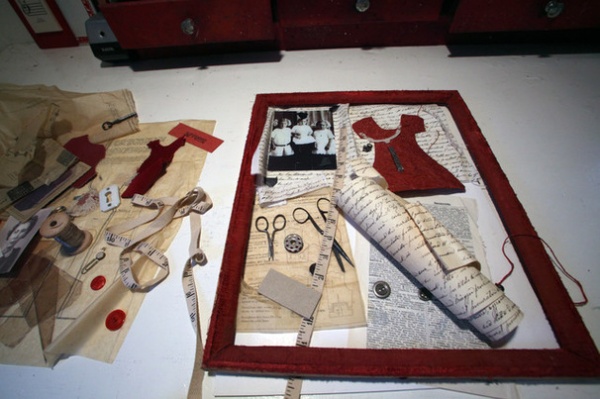
Seen here is the beginning of a new mixed-media collage.
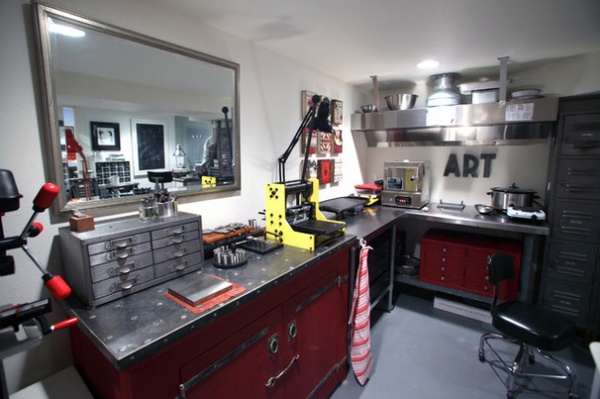
The surface of this red cabinet is used for stamping and cutting metal, while some equipment is stored below. “I have had so much fun creating this space over the past several years. When I’m feeling a block in my creativity, I just start rearranging things or find an old piece of furniture or vintage item I can convert to something useful for the space. I think this studio has actually become an art project in itself,” says Larson.
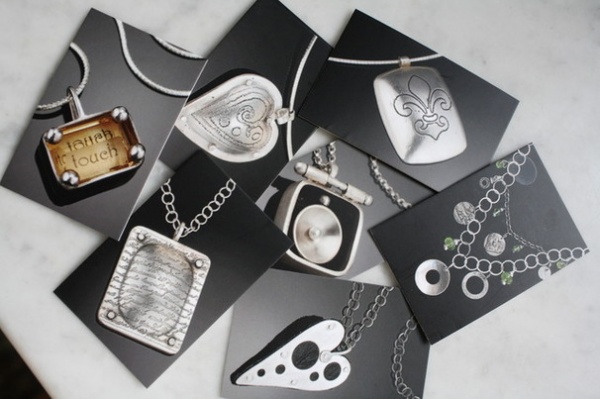
Larson has always been an artistically inclined maker, taking various art classes throughout her life. She began pursuing jewelry and metal arts in her mid-20s, which led to a plethora of work in other media.
These cards show Larson’s early jewelry work, which ultimately inspired the creation of this studio.
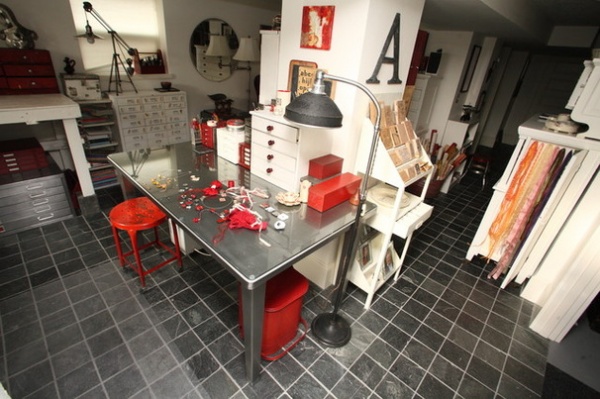
A vintage metal desk is used as a workspace and holds a collection of small vintage chests of drawers for storing jewelry bits.
Larson still loves to take art classes and workshops, and besides her mainstay in jewelry and metals, she has begun to pursue book arts, encaustic painting, assemblage and general mixed-media works.
“Currently I enjoy combining all of the techniques I have learned, and love to create metal and mixed-media books, cards and assemblage,” she says. “The problem is, I love so many different techniques and media that it is difficult to master any of them.”
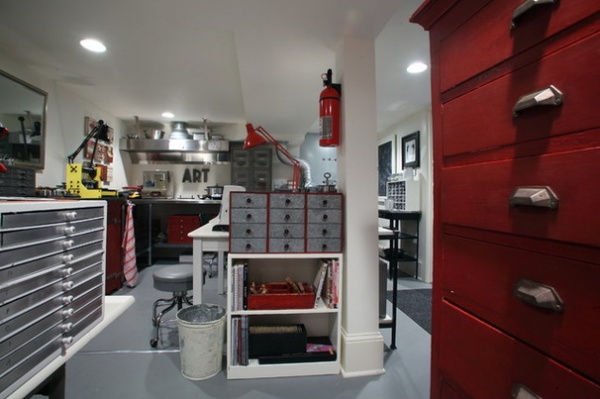
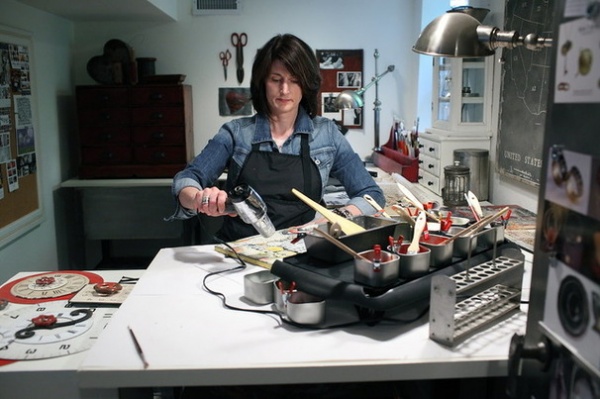
“My studio space is the happiest place in my home because of what I get to do in that space,” says Larson, seen here. “It is also the receptacle of most of my collections and obsessions, because there are no rules in this space. I can follow any whim and plaster stuff everywhere, and as long as it inspires me, that is all that matters. It is truly my sanctuary.”
More:
My Houzz: 1921 Portland Bungalow Gone Glam
Browse more Rooms of the Day
Related Articles Recommended












